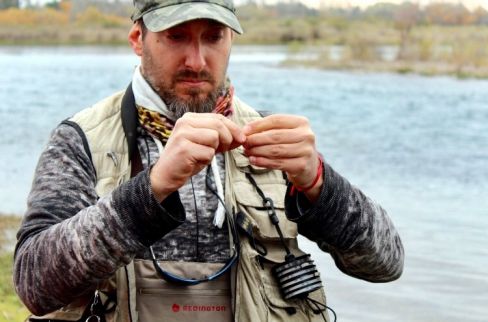La Bahia del Espiritu Santo (ESB) is the true gem of the Mexican Riviera, and perhaps the last remaining wilderness fly fishing outpost in the Mexican Yucatan. It has always been the “second sister” to it’s larger, more accessible cousin to the north, Ascension Bay. But for the dedicated saltwater fly fisherman, ESB provides the best angling opportunities in the entire Yucatan.
ESB was first discovered in 1518 by Juan de Grijalba, just a few days after the discovery of Ascension Bay. Grijalba was the nephew of the famous conquistador Diego Velasquez. He followed Velazquez in the conquest of Cuba in 1511, and in in 1518 Velazquez sent Grijalba to be the first to explore the Yucatan Peninsula. Grijalba set sail from Cuba with four ships about about 200 men, exploring the peninsula and mapping the bays, rivers, and estuaries that today are renowned sanctuaries for permit, tarpon, snook and bonefish. He discovered Espiritu Santo Bay on Pentecost Day (May 24, 1518), hence the name Espiritu Santo Bay “Bay of the Holy Spirit”.
Yet even before the Spanish came to these eastern shores of Mexico, ESB was more remote and isolated than Ascension Bay, and always seen as a wilderness outpost even before the days of colonization and “civilization.” During Mayan times, Ascension Bay was critical in providing food for the city of Tulum. The bay and the Boca Paila lagoon were heavily fished by the local Mayan communities, many of which remain today and incorporate important towns like Punta Allen, Muyil, or Vigia Chico. There were no towns or significant populations at ESB, however, its fishery remained in tact and un-impacted by harvest.
From a topographical and geographical standpoint, both bays are very similar. Both are shallow and create navigability challenges for vessels of any size. This is perfect habitat for the shallow saltwater flats that bonefish, permit, and tarpon prefer, while prohibiting commercial navigation.
The primary differences between ESB and Ascension Bay are size and accessibility. ESB is approximately half the size of her older sister; but Ascension Bay has more than six thousand people living around her shores in the present day towns of Punta Allen, Vigia Chico, Muyil, and Santa Helena. There are nine official lodges plus several back country, “unofficial” guides that fish the bay, and as of 2015 180 boats with permits for fishing, snorkeling, bird watching, or tours of the bay. This creates a vibrant tourism-based economy centered around these communities, and a constant impact of pressure on the bay.
Espiritu Santo Bay (ESB), however, remains perfectly positioned in a remote wilderness, an area void of tourism and the impacts of population and people. There is a small community of 95 lobster fishermen and their families that live in Punta Herrero, the only human settlement with access to the entire bay. Only 7 boats have legal access to fish in the bay. The combination of remoteness, lack of population, and limited access is what makes ESB unique and one of the most pristine resources left to target fish untouched by human influences.
There are simply very few places left in the world with the same sort of untouched natural resource as can be found in ESB. Healthy populations of bonefish, permit, tarpon, and snook abound in it’s flats, creeks, and lagoons. And nobody has better access, or more intimate knowledge of the bay, than the guides at Paradise Lodge.
Over the course of the past 5 seasons, Paradise guides have been on ESB nearly every day of the season, logging literally hundreds of hours learning every nook and cranny of this remarkable, remote fishery. The lightweight, super shallow-draft Hells Bay boats can access the many flats no one else can get into with the heavier, larger pangas that are more common in the region. Between August 2014 and August 2015 Paradise guides are proud to have logged in 201 days on the bay. In that duration, they’ve landed 675 pounds of permit and averaged 1.5 permits per day. They’ve registered 12 grand slams, and countless bonefish, tarpon, snook, and barracuda brought to the boat.
For permit fishermen, especially, there may be nowhere else on the planet that can compare to ESB. The populations of fish are there, especially in the prime summer months of July, August, September and October, when water temperatures are ideal and schools of permit abound on the flats of ESB.






